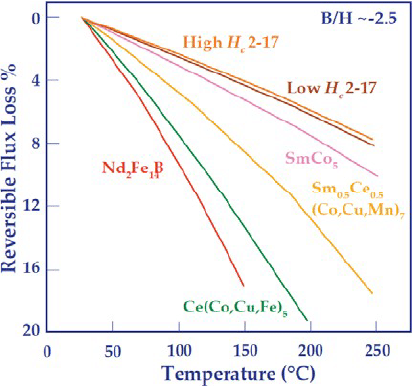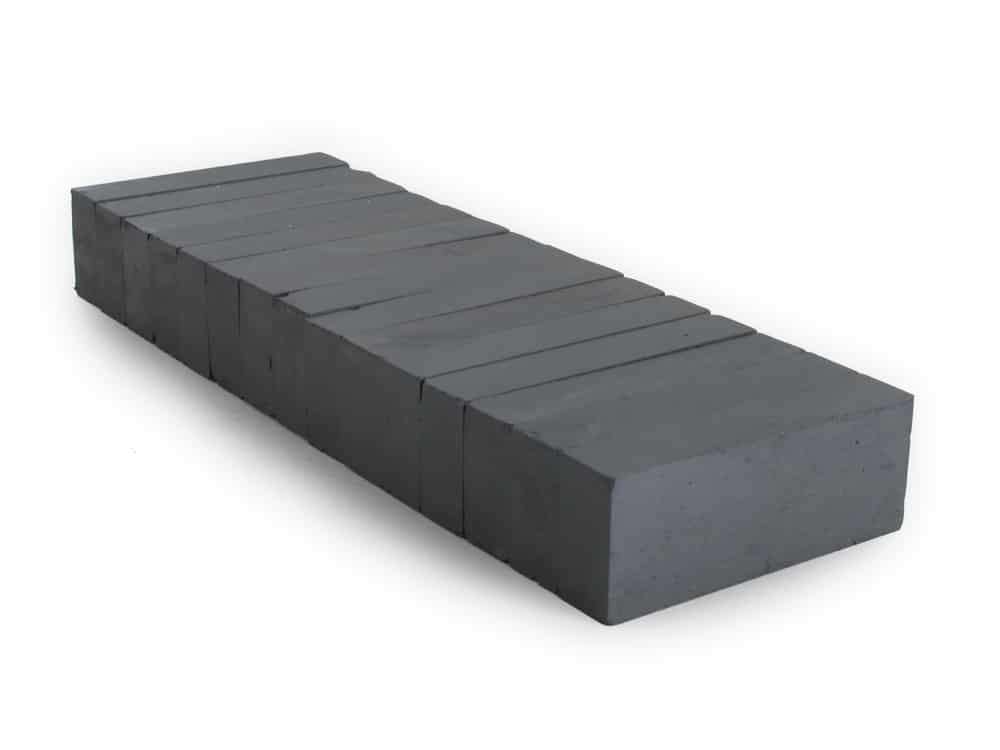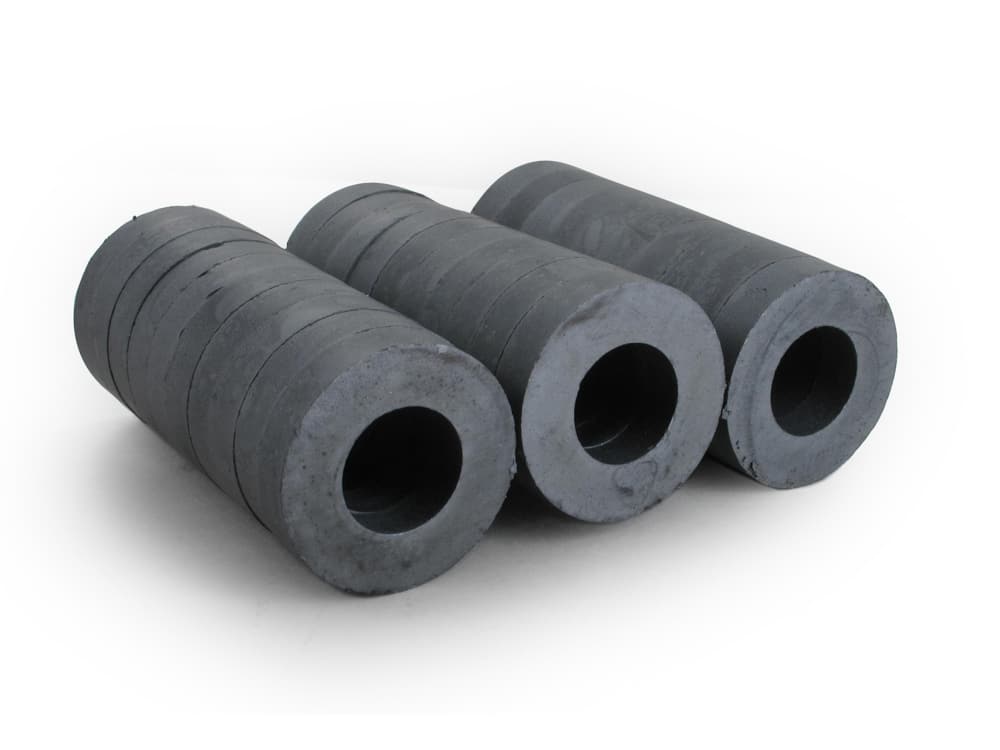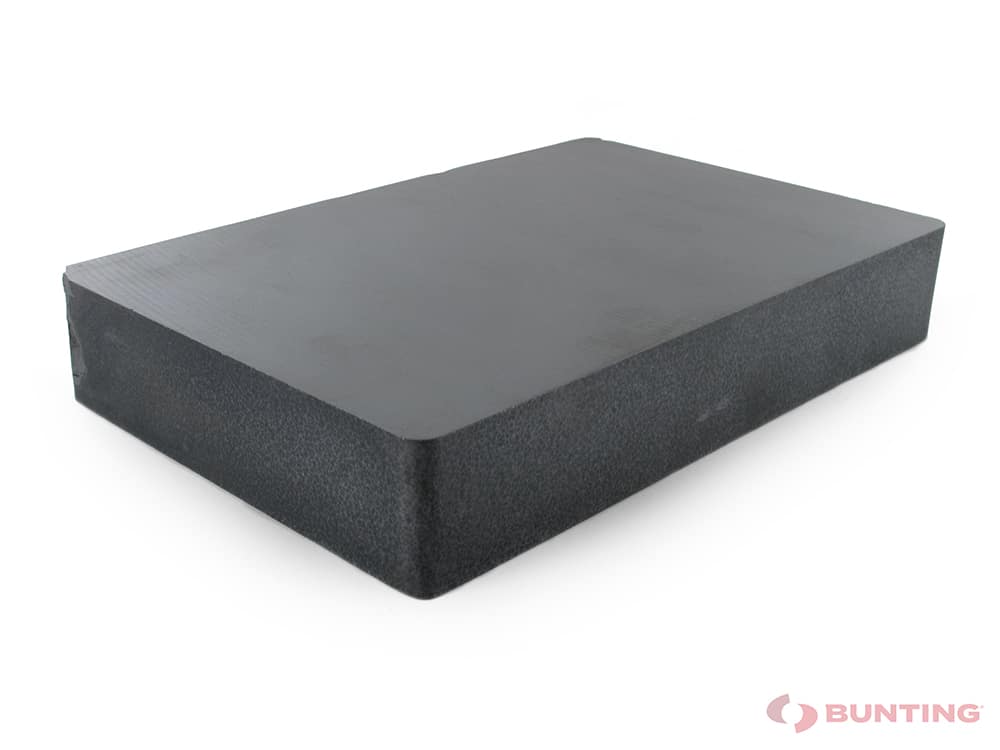If you’re using magnets in a variety of operation conditions, you’ll need to understand how temperature affects their magnetic properties. Different situations and conditions influence the magnetic response to temperature in a variety of ways.
Here, we’ll explain the effect temperature has on magnets, defining what Curie temperature is, how heat can affect magnetic strength, and exactly what happens at high and low temperatures.
How does temperature affect the strength of magnets?
When magnets are exposed to higher temperatures, they become weaker. As heat is applied, a reduction in the magnetic force takes place. The particles within the magnet speed up, become more sporadic and begin to misalign. This change can be irreversible, permanent or reversible depending on if it exceeds its maximum operating temperature, goes above its Curie temperature, or keeps below its operating temperature limit.
However, when a magnet experiences lower temperatures, its magnetic strength generally increases, as its magnetic properties are enhanced with the decrease in kinetic energy.
What is the Curie temperature?
The Curie temperature, named after French physicist Pierre Curie, who discovered how temperature affects magnetic properties, is the maximum temperature the material can take before magnetic capabilities are lost.
When magnets reach the Curie point, it triggers a change in direction and disorderment of its magnetic molecules. As magnetism is determined by the alignment of these magnetic molecules, when magnetic materials reach the Curie temperature, the magnetic strength is weakened and shifted out of alignment.
Different magnetic materials hold different properties and, therefore, different Curie temperatures.
Do cold temperatures make magnets stronger or weaker?
Yes, cold temperatures can affect magnets and make them stronger. As the molecules in the material reduce in temperature, their speed decreases, and there is less vibration. This decrease in kinetic energy concentrates the magnetic field and makes the magnetic force stronger.
Neodymium magnets can be immersed in liquid nitrogen at temperatures as low as -196 degrees Celsius, with no damage, and can be used within superconductor experiments, with their original force restored at room temperature.
However, if temperatures reach below -125 degrees Celsius, the magnetic force will decrease at a steady rate. When -196 degrees Celsius is reached, magnetic force shifts to 85-90%.
The exception is that ferrite magnets experience permanent magnetisation loss at temperatures below -40 degrees Celsius, and magnetic tapes and sheets can lose magnetic force at below -20 degrees Celsius, and should not be exposed to significant cold temperatures.
What happens to magnets at high temperatures
When magnets are exposed to high temperatures, there are three different outcomes.
Reversible loss
Reversible loss of magnetism happens when the heating process does not go above its maximum operating temperature. This means:
- While hot, the material is still less magnetic
- Original strength returns once cooled
- The magnet can be heated and cooled multiple times with no detrimental effect
Irreversible loss
Irreversible loss of magnetism is when a magnet is subjected to above maximum operating temperature, and below its Curie temperature. This means:
- If cooled, it will have a weaker performance than before
- Re-magnetism back to its original strength is possible, but not cost-effective
- Irreversible loss happens just once
Permanent loss
Permanent loss of magnetic properties occurs when a magnet is heated above its Curie temperature. This means:
- It is not possible to re-magnetise
- Often referred to as ‘smouldering’ temperature
- This could result in the melting of the magnet material
In theory, no application should be designed to function close to extreme temperatures such as these, and maximum operating temperatures should be referred to as standard.
Does temperature affect different types of magnets?
Temperature affects magnets at varying degrees, depending on a number of factors, including the type of material.

How does temperature affect samarium cobalt magnets?
This powerful rare earth magnet keeps its magnetic strength between 250-350 degrees Celsius, with higher resistance to demagnetisation than standard neodymium magnets. Samarium cobalt magnets won’t suffer irreversible losses until temperatures go above 150 degrees Celsius.
How does temperature affect neodymium magnets?
At its standard grade, this magnetic material has an operating temperature of 80 degrees Celsius. With special high-grade neodymium magnets maintaining magnetic performance in temperatures from 140-200 degrees Celsius. It is generally considered to have one of the best magnetic performances, however, its size, shape and grade will impact how much magnetic strength is lost for every degree Celsius rise in temperature.
The magnetic stability of a neodymium magnet is maintained at very low temperatures, with magnetic performance only affected at -138 degrees Celsius.
How does temperature affect alnico magnets?
Characterised by their high strength and greatest thermal stability, the maximum operating temperature of alnico magnets is between 450-900 degrees Celsius. However, it is worth noting that they can be more likely to become demagnetised by external magnetic fields and physical shock.
Ferrite magnets
Ferrite magnets differ in how they become more resistant to demagnetisation as their temperature increases. They are a popular choice for high-temperature applications. Ferrite magnets are the most commonly used and have a maximum operating temperature of up to 300 degrees Celsius.



Does the shape of a magnet affect its maximum usable temperature?
Yes, a magnet’s shape affects its maximum usable temperature. Very thin or flat magnets will encounter irreversible losses at temperatures below the maximum operating temperature. However, if the ratio of diameter to height is less than 4, magnetism won’t be lost if heated above the maximum operating temperature.
Importance of knowing the maximum operating temperature of magnets
When selecting a magnet for a specific application, it is important to understand the maximum operating temperature. You must ensure the magnet’s optimum magnet field isn’t at room temperature or past the magnet’s Curie temperature.
Bunting designs and manufactures a wide range of magnets and magnetic assemblies. Many are bespoke for specific applications. For further information on any of the products mentioned in this review, or for bespoke magnet assemblies and magnet designs, please contact us via:
Phone: +44 (0) 1442 875081
Email: eMagnets@buntingmagnetics.com
Via Bunting-eMagnets for online purchase of Magnets and Magnetic Technology

